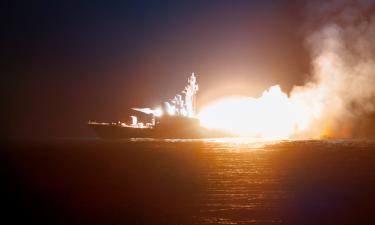Hurricane Rita grows to category 2
Rita strengthened rapidly to a Category 2 hurricane Tuesday as it raked the Florida Keys with flooding rain and sparked a flurry of storm preparations across the Gulf Coast.
Thousands of people were evacuated from the Keys and low-lying areas of northern Cuba. On the far side of the Gulf of Mexico in Texas, Galveston started evacuations and officials made plans to move refugees from Hurricane Katrina who had been housed in the Houston area to Arkansas.
After the sluggish government response to Hurricane Katrina along the northern Gulf Coast, Florida Gov. Jeb Bush said more than 2,000 Florida National Guard troops and dozens of law enforcement officers were ready to deal with the storm's aftermath. More than 200 truckloads of ice and water were prepared for delivery to the Keys if needed and helicopters were in place for search and rescue, he said.
Authorities said it appeared the Keys were spared the storm's full fury. "I think we did, so far, dodge a bullet," said Key West Mayor Jimmy Weekley. Rita started the day as a tropical storm with top sustained wind of 70 mph. But as it cruised through the Florida Straits between the Keys and Cuba, it gathered energy from the warm sea and by early afternoon it had top wind of 100 mph with higher gusts, the National Hurricane Center said.
The next step up would be Category 3, with maximum sustained wind of 130; Katrina was a Category 4 hurricane when it hit the Gulf Coast with 145 mph sustained wind. President Bush, receiving an update on Rita's path from aboard the USS Iwo Jima docked in New Orleans, was told that the storm is expected to reach Category 3 strength and bring 15-20-foot storm surges. There is a 5 percent chance the storm could bring sustained hurricane-force winds to New Orleans, said Ed Rappaport, deputy director of the National Hurricane Center, ABC News reports.
Subscribe to Pravda.Ru Telegram channel, Facebook, RSS!




